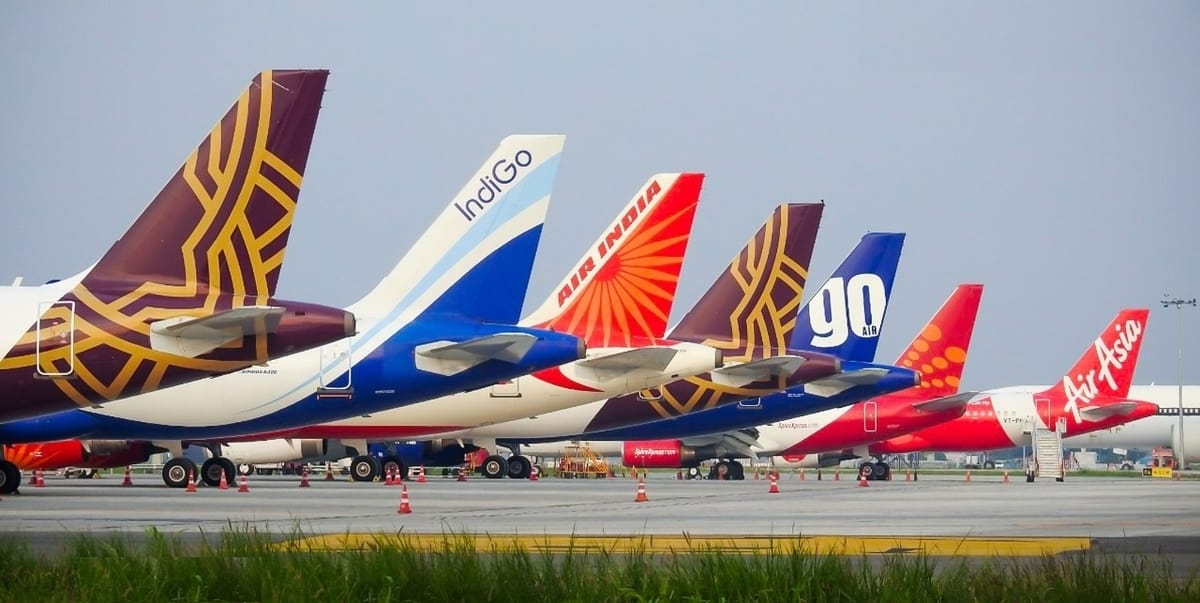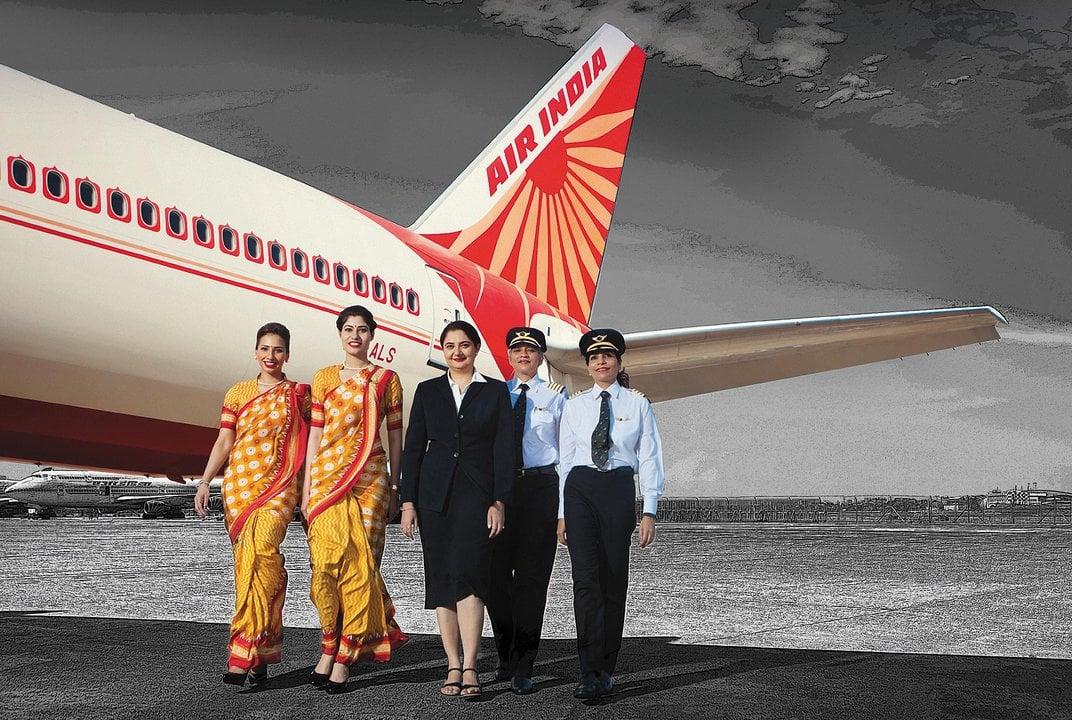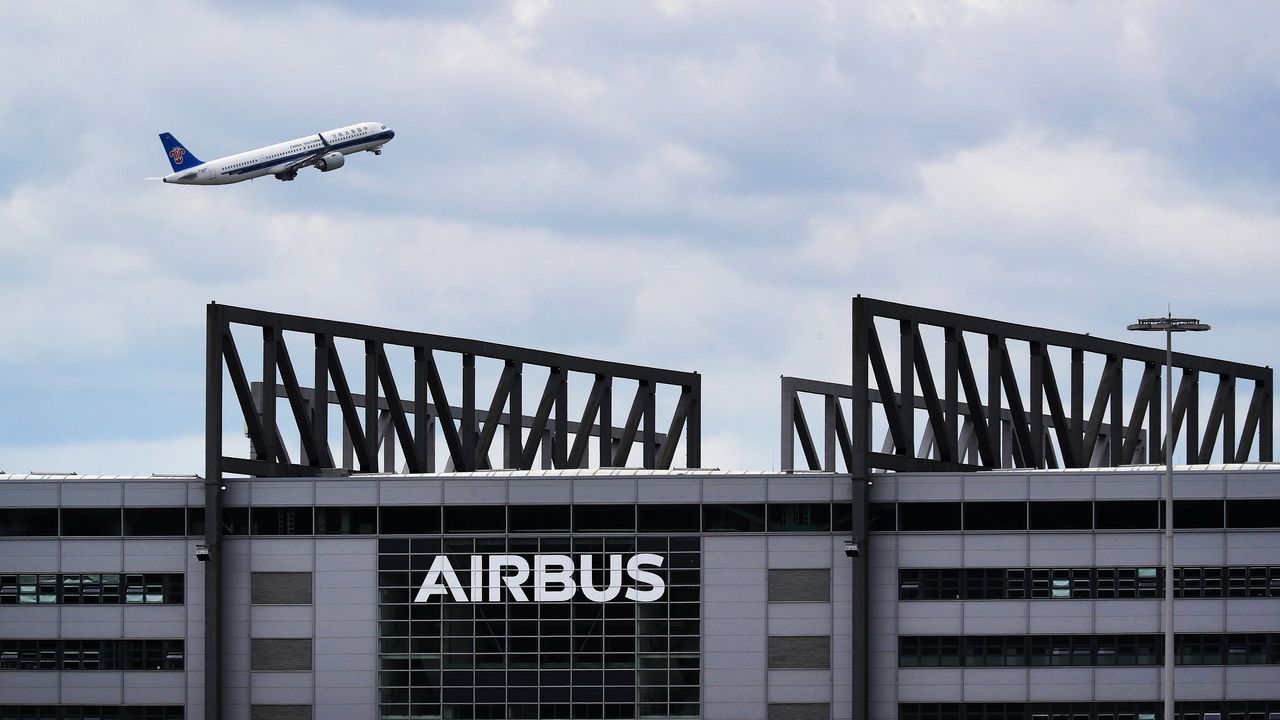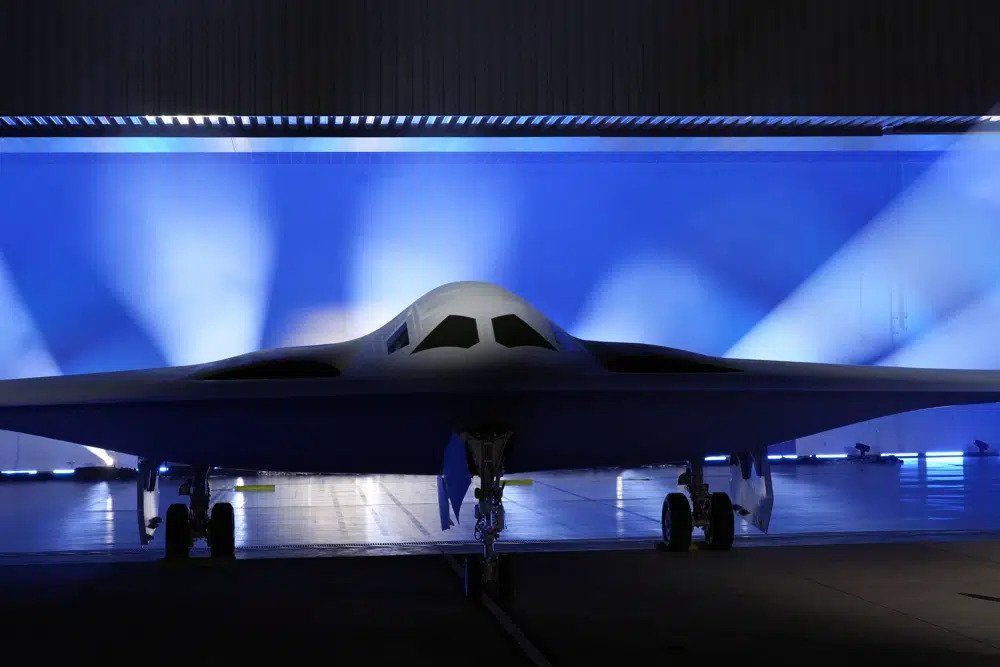Airbus, European aerospace giant seeks to get Green Hydrogen from regions including Latin America, Australia, and India as part of its decarbonization efforts.
Airbus is working on a hydrogen-powered fuel cell engine for their ambitious ZEROe aircraft that will go into service by 2035
Airbus is working on a hydrogen-powered fuel cell engine for their ambitious zero-emission aircraft that will go into service by 2035. India and Latin America, among other places, are appealing as potential supply centres due to the low cost of producing renewable energy.
The term "green hydrogen" describes hydrogen produced using low-carbon or renewable energy sources such as wind or solar. In comparison to "grey hydrogen," which is made from fossil fuels like natural gas, it emits much fewer carbon emissions. The majority of the hydrogen market at the moment is made up of grey hydrogen.
Green hydrogen is hydrogen that has been produced with low-carbon or renewable energy sources, like solar or wind
It has been hailed as the key to decarbonizing sectors that depend on coal, gas, and oil; nevertheless, the prices of production have historically been significantly higher than those of other kinds of hydrogen, and there are also doubts about the demand globally.
“One of the key activities that are underway at Airbus is to make sure that when we have a hydrogen aircraft available, we also have green hydrogen at airports. So, we are doing a lot of work with different airports and energy providers all across the world to make sure that green hydrogen is available at the right price when we need it.”
–Glenn Llewellyn, VP Zero-Emission Aircraft, Airbus
A partnership agreement between Airbus and HyPort has been signed in order to build a low-carbon hydrogen production and distribution facility at the France airport of Toulouse-Blagnac. The airport is expected to go into operation in early 2023. It will be able to create approximately 400 kg of hydrogen each day, which would be sufficient to power 50 ground transportation vehicles.
Llewellyn mentioned that although there are currently no hydrogen-powered aircraft flying, hydrogen may be used to reduce airport carbon emissions, which enables the availability of hydrogen to be increased and helps us get ready for the day when planes will require it.
A partnership agreement has been reached between Airbus and HyPort in order to develop a low-carbon hydrogen production and distribution facility at the Toulouse-Blagnac airport in France
“We are looking at... how we can get hydrogen from places like India, Australia and Latin America, where we think the cost of hydrogen production is really interesting, and what the value chain will be to get that hydrogen to other regions of the world where maybe it’s more costly to produce locally.”
–Glenn Llewellyn, VP Zero-Emission Aircraft, Airbus
India is a key market for Airbus in the production of Green Hydrogen. The National Hydrogen Mission was introduced by Prime Minister Narendra Modi on August 15, 2021, with the goal of making India a significant leader in the sector. By 2030, the nation aims to produce 5 MT of green hydrogen as part of this project.
Also read: The road to Airbus ZEROe- Hydrogen Tanks
India has previously stated that it wants to increase its renewable energy capacity to 500 GW by 2030 and get 50% of its electricity from renewable sources.
Airbus' Zero-Emission Aircraft VP said that India is an amazing location with huge potential for the production of (green) hydrogen at a very exciting cost
“India is an amazing location with huge potential for the production of (green) hydrogen at a very exciting cost. I would hope that one day we can have zero emission aircraft operating out of airports like Delhi and others at attractive price points based on homegrown renewable energy ecosystem.”
–Glenn Llewellyn, VP Zero-Emission Aircraft, Airbus
Airbus is collaborating with airports, energy providers, and infrastructure suppliers to create the ecosystem required to operate a hydrogen aircraft, which it intends to launch in 2035.
(With inputs from The Economic Times)
Read next
India moves up to 48th position in the global aviation safety ranking by ICAO
Radhika Bansal
05 Dec 2022

India has jumped to the 48th position in the global aviation safety ranking by the International Civil Aviation Organization (ICAO), according to DGCA officials. Four years ago, the country was ranked in the 102nd position.
The top five countries in the ICAO ranking are Singapore with a score of 99.69%, UAE with a score of 98.8%, South Korea (98.24%), France (96.42%) and Iceland (95.73%). The US was in 22nd place and Qatar at 25th place. China is in 49th place.
Others in the top ten are Australia (6th; 95.04%), Canada (7th; 94.95%), Brazil (8th; 94.72%), Ireland (9th; 94.6%) and Chile (10th; 93.9%), as per the DGCA officials.
The country’s score in terms of effective implementation of key safety elements has improved to 85.49%, putting it ahead of China (49), Israel (50), Turkey (54), Denmark (55) and Poland (60). India’s score in the 2018 Universal Safety Oversight Audit Programme was 69.95%.
With a score of 85.49% each, India and Georgia are in the 48th position. Neighbouring Pakistan is at the 100th spot with a score of 70.39%.
Under its Universal Safety Oversight Audit Programme (USOAP) Continuous Monitoring Approach, an ICAO Coordinated Validation Mission (ICVM) was undertaken from November 9 to 16.
On Saturday, December 3, DGCA chief Arun Kumar said that the regulator has worked tirelessly to upgrade India's safety ranking and the results are there. "Hopefully, we continue to remain vigilant and improve further".
“Maintaining the new-found status is a challenge. We assure all our stakeholders that DGCA (Directorate General of Civil Aviation) will leave no stone unturned to further improve India’s ranking. We have done well. Now the challenge lies in retaining the newfound status. DGCA is a bunch of extremely competent officials and we are confident that given proper support, we will improve further. A formal announcement on the result is expected soon."
Arun Kumar, Director General, DGCA
On November 16, the Directorate General of Civil Aviation (DGCA) said the audit was conducted in the areas of legislation, organisation, personal licensing, operations, airworthiness and aerodromes.
"As per the initial reports, the mission was highly successful. India has done extremely well and our scores will see a substantial improvement putting us in the company of nations with the best safety standards and oversight systems," it had said in a release.
The improved safety ranking will make it easier for Indian carriers to expand their wings abroad. Tata Group’s Air India and IndiGo have massive expansion plans. Airlines of countries with dubious aviation safety records find their aircraft being subjected to more surprise checks at airports abroad.
The higher ranking means that India has improved its air safety processes. Better aviation safety in home skies also allows Indian carriers to expand faster in overseas markets as permissions for new services are easier to get.
The United Nations agency conducted the audit from November 9 to 16 in areas including legislation, organisation, personal licensing, operations, airworthiness and aerodrome. “Two areas, aircraft accident and investigation and air navigation, were not audited by ICAO,” Kumar said.
“To check if rules were being followed, the team also visited Delhi airport, SpiceJet, a charter operator, air traffic control, communication navigation and surveillance,” he said.
India’s score for civil aviation organisation rose from 63.64% to 72.73%, personnel licensing and training from 25.58% to 84.71%, aircraft operations from 80.34% to 97.44%, airworthiness of aircraft from 90.20% to 97.06% and aerodrome and ground aids from 72.36% to 92.68%.
In the mission done last month in India, the Effective Implementation (EI) of six areas was assessed. They are LEG, ORG, PEL, OPS, AIR and AGA. LEG is Primary Aviation Legislation and Specific Operating Regulations; ORG is Civil Aviation Organisation; PEL is Personnel Licensing and Training; OPS is Aircraft Operations; AIR is Airworthiness of Aircraft, and AGA is Aerodrome and Ground Aid.
So far for India, the ICAO has done the Coordinated Validated Mission four times, including the last one in November this year. It did the mission in December 2012 that covered all the areas and the EI score rose from 79.84% to 81.32%.
The mission was next conducted in August 2013 that looked at two areas -- OPS and AIR. At that time, the score improved from 79.73% to 81.19%. Another mission was done in November 2018. It covered LEG, ORG, AIG, ANS and AGA.
During that time, the EI score declined from 71.86% to 69.95%. AIG is Aircraft Accident and Incident Investigation; ANS is Air Navigation Services.
The ICAO looks at eight critical elements of the safety oversight system, including primary aviation legislation, specific operating regulations, resolution of safety issues and surveillance obligations.
In July, against the backdrop of various technical snags faced by domestic airlines, the DGCA chief had said they did not have the potential to cause havoc and that the country's civil aviation space was "absolutely safe" and all the protocols laid down by the ICAO were followed.
https://twitter.com/MoCA_GoI/status/1599396008479567873
In a series of tweets, the Ministry of Civil Aviation (MoCA) said the ICAO has given the Directorate General of Civil Aviation (DGCA) the highest Effective Implementation (EI) score of 85.49%.
"India is now among the top 50 countries with best aviation safety according to the latest @icao rankings. This major breakthrough will also help Indian airlines to expand internationally," it said.
Read next
Malaysia Airlines has resumed services from Cochin International Airport Limited (CIAL).
CIAL managing director S. Suhas inaugurated the services. The flight from Kuala Lumpur will reach Kochi on Sundays, Mondays, Thursdays, and Saturdays at 11.35 p.m. and will return on the days at 12.35 a.m.
At present, Air Asia and Malindo Air are operating services in the Kochi-Kuala Lumpur sector. With the resumption of services by Malaysia Airlines, there are now 20 weekly services from Kochi to Kuala Lumpur.
https://twitter.com/KochiAirport/status/1598645096253362177
CIAL director C. Dinesh Kumar, company secretary Saji K. George, and Malaysia Airlines manager Shajeer Sultan were present at the function.
https://twitter.com/KochiAirport/status/1598220351536001024
Read next
After years of undercover construction, America's newest nuclear stealth bomber made its public debut on Friday as part of the Pentagon's response to growing worries about a potential clash with China.
After being delivered to the U.S. Air Force, the B-21 currently becomes a part of the strategic triad of the country as a visible and adaptable deterrent, advancing goals for national security and providing assurance to allies and partners.
The Raider gives the Air Force extended range, excellent survivability, and mission payload flexibility when it comes to delivering America's resolve. The B-21 can deliver pinpoint strikes anywhere in the world despite the toughest defenses.
Some key facts about the B-21 bomber
1. Sixth Generation
The B-21 is prepared for the high-end threat environment because to its next-generation stealth technologies, superior networking capacities, and open systems architecture. It will be crucial in assisting the Air Force in completing some of its most difficult missions.
2. Stealth
50 years of advances in low-observable technology have gone into its development. In order to assure that the B-21 will be successful against the anti-access, area-denial systems it would encounter, Northrop Grumman continuously develops technology.
3. A Digital Bomber
It is a computerized bomber, the B-21. Modern sustainment processes are made possible by Northrop Grumman's use of agile software development, innovative manufacturing methods, and digital engineering tools, which serve to reduce production risk on the B-21 program. At the Northrop Grumman facility in Palmdale, California, six B-21 Raiders are undergoing various stages of final assembly and testing.
4. Cloud Technology
In a successful demonstration, Northrop Grumman and the Air Force moved data from the B-21 ground systems to a cloud environment. The development, deployment, and testing of B-21 data, including the B-21 digital twin, which will support B-21 operations and sustainment, were all part of this demonstration. This strong cloud-based digital infrastructure will lead to a more durable and environmentally friendly airplane with less expensive infrastructure.
5. Open Architecture
The B-21 has been built from the ground up to be quickly upgradeable in order to adapt to the changing threat environment. The B-21 will not get block improvements, in contrast to preceding generation aircraft. Agile software updates and built-in hardware flexibility will enable the seamless integration of new technology, capabilities, and weaponry. By doing this, the B-21 Raider will be able to confront the changing threat head-on for decades to come.
We needed a new bomber for the 21st Century that would allow us to take on much more complicated threats, like the threats that we fear we would one day face from China, Russia- said Deborah Lee James, the Air Force secretary when the Raider contract was announced in 2015
Other modifications include the employment of cutting-edge materials in coatings to make the bomber more difficult to detect, new techniques for controlling electronic emissions so the bomber might fool enemy radars and pass for another object, and new propulsion technology.
(AP Photo/Marcio Jose Sanchez)
In production are six Raiders. The Air Force intends to construct 100 such aircraft that can launch conventional or nuclear bombs and can operate with or without a crew. The Air Force and Northrop both emphasize the Raider's rapid development: The bomber made its debut seven years after the contract was awarded. It has taken decades for other new fighter and ship programs.
The Doolittle Raid, which took place during World War II and involved 80 airmen under the command of Lt. Col. James "Jimmy" Doolittle and 16 B-25 Mitchell medium bombers, inspired the naming of the B-21 Raider. These 80 volunteers' deeds significantly changed the tide in the Pacific theater. This designated the attack as the starting point for numerous subsequent developments in American air superiority from land or water. The B-21 Raider takes its name from the valiant character of the Doolittle Raiders.
https://www.youtube.com/watch?v=0uLrGT-gfOI
SOURCE: NORTHROP GRUMMAN | APNEWS
COVER: (AP Photo/Marcio Jose Sanchez)
Read next
Air India graduates the first batch of cabin crew trainees & pilots; ready to take off on A320 fleet
Radhika Bansal
03 Dec 2022

Air India on Friday, December 2 said 48 new pilots and 215 cabin crew who have completed their training, will start operating the airline's A320 fleet. A total of 40 men and 8 women pilots have completed their training at Air India's training campus in Hyderabad.
In a release, the Tatas-owned Air India said its maiden batch of cabin crew trainees and a significant batch of new pilots since privatisation, have graduated. The batch of 215 cabin crew and 48 pilots, all Indian nationals, received their wings following extensive training, and are now cleared to operate as fully-qualified crew.
"We are delighted to welcome these new Air Indians to the team, handpicked from India’s growing pool of talent. Air India is hiring across all business areas, and from all parts of the country, to support our transformation and ambitions growth plans. Attracting and developing enthusiastic and capable people is an important and crucial part of our Vihaan.AI transformation program."
Campbell Wilson, CEO and Managing Director, Air India
The Tata group took control of Air India in January this year. According to the release, the new pilots, comprising 40 men and 8 women, will commence operating the Airbus A320 fleet.
The batch of 215 cabin crew trainees was selected from more than 13,000 candidates. The cabin crew trainees cleared a 15-week programme imparting safety and service skills, and were coached to exemplify the best of Indian hospitality and Tata group culture.
ALSO READ - Air India hits with Pilot & Cabin Crew shortage as it plans to expand internationally
Air India graduates the first batch of cabin crew trainees & pilots; ready to take off on the A320 fleet
The programme included extensive classroom and in-flight training at the airline's training facility in Mumbai as well as familiarisation flights, the release said.
ALSO READ - Air India issues new grooming guidelines for Cabin Crew
Last week, Air India has updated its ‘Cabin Crew Handbook’, a 39-page dossier on the dos and don’ts for its crew members.
As part of its instructions, Air India asked its male crew members with deep receding hairlines and balding patches to switch to a clean shaved or bald look. Beards are a strict no-no and male members must carry a shaving kit on every flight. Any spot of grey hair must be removed and dyed a natural shade or ‘company ruled colours’.
Air India has updated its ‘Cabin Crew Handbook’, a 39-page dossier on the dos and don’ts for its crew members.
For female crew members, high top knots, low buns and pearl earrings are banned. These requirements are part of the effort to construct a new image of the airline, which recently turned private.
As part of expanding its operations, Air India has announced direct flights between various Indian cities and destinations like Doha, San Francisco, Vancouver, and Birmingham. Besides, the airline is set to commence direct flights from Delhi to key European cities like Milan, Vienna and Copenhagen, and from Mumbai to New York, Paris and Frankfurt.
ALSO READ - Air India to broaden its network in the US
Read next
EaseMyTrip increased 7.22% to Rs 67.55 after the business disclosed that it had signed a binding deal to buy a 75% stake in Nutana Aviation Capital IFSC.
According to the Crisil Report-Assessment of the OTA Industry in India, February 2021, Easy Trip Planners (EaseMyTrip) is one of the largest online travel platforms in India in terms of booking airline tickets. It provides "End to End" travel options, including train and bus tickets, hotel rooms, vacation packages, and flight tickets.
Nutana Aviation is Gujarat’s GIFT city-based charter solutions company that offers charter solutions to clients in India and abroad and leases charter aircraft within and outside India.
Nutana Aviation offers charter solutions to clients in India and abroad and leases charter aircraft within and outside India
According to Easy Trip Planners, the acquisition of Nutana Aviation is a strategic choice that is consistent with its long-term diversification ambitions of creating a complete travel ecosystem. EaseMyTrip also stated that it wanted to increase its footprint in international areas while concentrating on inorganic growth and profitability.
Also read: EaseMyTrip forms an exclusive partnership with Flybig
EaseMyTrip would own the majority of Nutana aviation as part of the agreement. Following EaseMyTrip's investment, Nutana Aviation will carry on as a stand-alone business.
“As an acquiring party, EaseMyTrip always tries to buy stakes in companies that have the capability to establish an exemplary operations model in the future. Nutana Aviation brings a very novel idea to realization with its services. With India’s ever-growing demand for aircraft charters in the foreseeable future, we see Nutana shaping a reliable, robust, and profitable channel. We are extremely excited to see what the future holds for Nutana Aviation as a part of the EaseMyTrip brand.”
–Nishant Pitti, CEO and Co-founder, EaseMyTrip
Nishant Pitti, CEO of EaseMyTrip predicts that demands for corporate travel will increase in the coming year
He predicts that demand will come from business travel.
“We see a brilliant opportunity in this segment. By the end of this fiscal, we will sell and lease back three aircraft, and in the next fiscal will invest in 10 aircraft. We believe that this segment will have the potential to contribute up to Rs 10 crore in the next financial year.”
-Nishant Pitti added.
He said that EaseMyTrip will be the only site for purchasing tickets for the charter services. The business will also make money from ticket sales as a commission.
“It’s our great pleasure to enter into a joint venture with EaseMyTrip which is India’s one of largest travel platforms. It will not only support its organic growth in the travel industry but also support a number of opportunities related to booking charter and leasing air services immersed with technology across the globe. Our combined experience in the aviation sector would usher into a new era of aviation.”
–Sanjay Mandavia, Founder, Nutana Aviation
EaseMyTrip announced record gross booking revenue for the second quarter of FY23, which was $1,977.7 crore, the highest ever for any period. In Q2FY23, the company generated operating revenue of 108.5 crores, up from 56.65 crores in the same quarter last year, on a consolidated basis. To $112.07 crore, net income increased 87.5% year over year.
Following the announcement, EaseMyTrip stock today increased on the exchanges. The stock increased nearly 5% from Wednesday's close to close today on the BSE, closing at INR 66.
Following the Nutana Aviation acquisition announcement, EaseMyTrip stock today increased on the exchanges
EaseMyTrip's performance has been most remarkable in 2022, despite a persistently negative attitude toward new-age IT firms. Prior to two weeks ago, when they began trading ex-bonus and ex-split, their shares reached their highest circuit on the BSE.





Comment